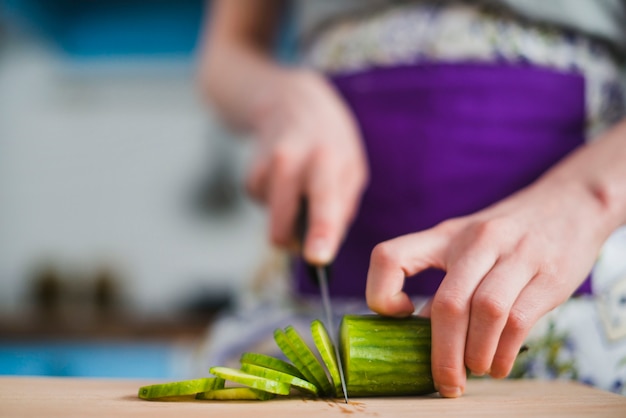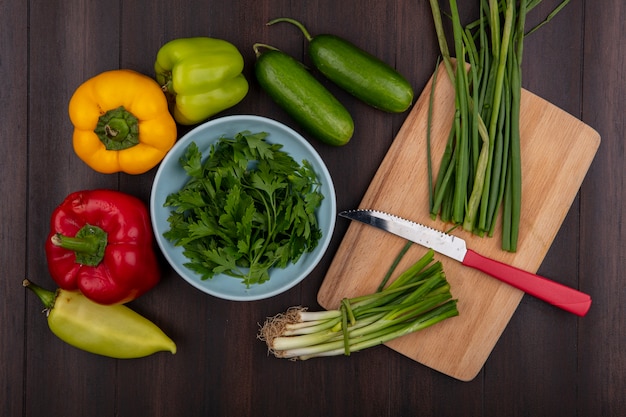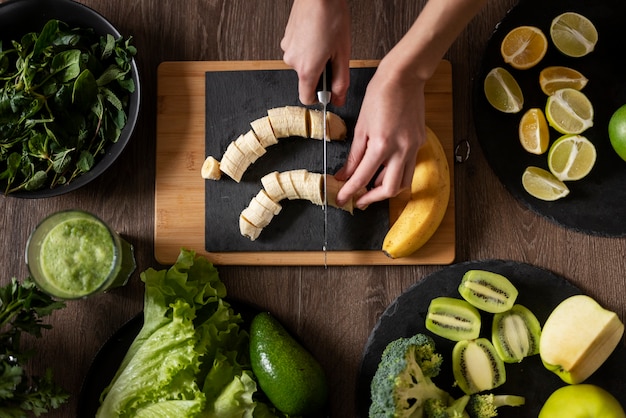Asparagus. The mere mention of the word conjures up images of vibrant green spears, bursting with springy freshness. It's a culinary delight, a symbol of new beginnings, and the perfect way to celebrate the warmer months. But let's face it, sometimes even the most seasoned cooks find themselves wrestling with asparagus that's limp, overcooked, and more reminiscent of grass than the delicious vegetable it should be. I've been there, trust me. I've had my fair share of asparagus disasters – those rubbery, pale green stalks that left me wondering if I'd chosen the wrong veggie entirely. But after years of trial and error (and plenty of burnt asparagus!), I've finally cracked the code to perfect stovetop asparagus.
This isn't just a recipe; it's a guide, a journey to asparagus nirvana, shared with you. We'll explore the secrets to choosing the perfect spears, the art of preparation, and the different cooking methods that unlock the true potential of this wonderful vegetable. Get ready to embrace the delicious, perfectly cooked asparagus that you deserve – every single time.
(Part 1) Choosing the Right Asparagus: The Foundation for Success

Imagine building a house on shaky ground. It wouldn't last long, would it? The same goes for asparagus. It's the foundation of a delicious dish, and choosing the right asparagus is the first step towards a truly satisfying experience.
The Look and Feel of perfect asparagus: A Visual Guide
Asparagus should be a visual feast before it even reaches the stove. Look for spears that are firm and vibrant. The colour should be a bright, healthy green, indicating freshness and vitality. If the spears are limp or wilted, it's a sign they've lost their freshness. And avoid those with brown or yellowing tips, as they indicate aging and a less-than-delicious flavour.
Thickness Matters: Tailoring Your Cooking Method
The thickness of your asparagus spears plays a key role in choosing the right cooking method. Thinner spears, with a diameter of about 1/4 inch, are best roasted or grilled. The gentle heat of these methods brings out their delicate sweetness without overcooking them.
Thicker spears, on the other hand, with a diameter of 1/2 inch or more, thrive under a more intense cooking method. They benefit from blanching, where they're quickly cooked in boiling water before being plunged into ice water to stop the cooking process. Pan-frying is another great option for thicker asparagus, as it allows for a beautiful char and caramelization.
Seasonal Asparagus: Taste the Difference
As with any fruit or vegetable, seasonal asparagus is a game-changer. It’s brimming with flavour and texture, making a world of difference to your final dish. The peak season for asparagus varies depending on where you are in the world. In the UK, it’s typically from late March to June. If you can get your hands on fresh, seasonal asparagus, go for it – it’s worth the effort.
(Part 2) preparing asparagus: Setting the Stage for Stovetop Success

You’ve got your asparagus; now it's time to get them ready for the stovetop. It’s a simple process, but a few key steps make a world of difference.
Trimming the Ends: A Crucial Step for a Pleasant Eating Experience
Asparagus has a tough, woody end that’s not exactly pleasant to eat. It’s essential to trim this off before cooking. The best way to do this is to snap off the ends. Just hold a spear a few inches from the bottom and gently bend it until it breaks. The break point will be where the tough part ends and the tender part begins.
Washing and Drying: Cleanliness is Key
After trimming, give your asparagus a good wash, ensuring all the dirt and grit is removed. I always rinse them under cold running water, and if they’re particularly dirty, I’ll give them a quick scrub with a vegetable brush. Then, dry them thoroughly using a clean tea towel or a salad spinner. This helps to ensure a crisp texture and prevents the spears from steaming in the pan, which can make them soggy.
(Part 3) Stovetop Cooking Methods: Unlocking the Flavour and Texture Potential

Now for the exciting part – the actual cooking. We’re about to unlock the secrets to perfectly cooked asparagus, and it all starts with choosing the right method.
1. Blanching: The Quick and Easy Option for Vibrant Green and Delicate Flavour
Blanching is a simple, quick method that’s perfect for preserving the asparagus’s vibrant green colour and delicate flavour. Here’s how:
- Fill a large pot with water and bring it to a rolling boil. Make sure there’s enough water to cover the asparagus spears comfortably.
- Add the asparagus spears to the boiling water and cook for about 2-3 minutes for thin spears, 3-4 minutes for medium spears, and 4-5 minutes for thicker spears. You want them to be tender-crisp, with a slight firmness to the bite.
- Immediately drain the asparagus and plunge it into a bowl of ice water. This stops the cooking process and helps retain the asparagus's bright green colour. It also helps to firm up the spears, which can be helpful if you’re planning to serve them cold.
- Pat the asparagus dry and serve it with your favourite seasonings and sauces.
2. Pan-Frying: A Savoury Delight for a Beautiful Char and Intense Flavour
Pan-frying adds a beautiful char and a delicious flavour to your asparagus. Here’s how to make it happen:
- Heat a large skillet or frying pan over medium-high heat. Add a tablespoon of olive oil or butter. For a richer flavour, I like to use a combination of both.
- Add the asparagus spears to the hot pan, making sure they’re in a single layer. Don't overcrowd the pan, or they won’t cook evenly. If necessary, cook in batches.
- Cook for about 3-5 minutes for thin spears, 4-5 minutes for medium spears, and 5-6 minutes for thicker spears. Flip the asparagus halfway through to ensure even cooking.
- Season with salt, pepper, and any other herbs or spices you like. Lemon zest, garlic, and red pepper flakes are my favourites for adding a burst of flavour.
3. Sautéing: A Simple and Versatile Method for a Quick and Easy Asparagus Fix
Sautéing is a great option if you want a quick and easy way to cook asparagus. This method requires minimal effort but still delivers a delicious result:
- Heat a large skillet or frying pan over medium heat. Add a tablespoon of olive oil or butter.
- Add the asparagus spears to the pan, making sure they’re in a single layer.
- Cook for about 5-7 minutes for thin spears, 6-7 minutes for medium spears, and 7-8 minutes for thicker spears, stirring occasionally, until the asparagus is tender-crisp and slightly wilted. You’ll notice the spears start to turn a vibrant green.
- Season with salt and pepper, and add any other seasonings you like.
(Part 4) cooking time: The Key to Finding the Perfect Texture
Cooking time is critical when it comes to asparagus. It’s the difference between tender-crisp spears and limp, mushy ones.
Here’s a guide to help you:
| Thickness | Blanching Time | Pan-Frying Time | Sautéing Time |
|---|---|---|---|
| Thin (1/4 inch diameter) | 2-3 minutes | 3-4 minutes | 5-6 minutes |
| Medium (1/2 inch diameter) | 3-4 minutes | 4-5 minutes | 6-7 minutes |
| Thick (3/4 inch diameter) | 4-5 minutes | 5-6 minutes | 7-8 minutes |
Remember, these are just guidelines. Always use the “fork test” to check if your asparagus is cooked to your liking. Simply pierce a spear with a fork. It should be tender but still slightly firm. If it’s too soft, it’s overcooked.
(Part 5) Enhancing Flavour: The Art of Seasoning
Asparagus is a blank canvas, ready to be transformed by the magic of seasoning. Here are some of my favourite ways to elevate its flavour.
Classic Salt and Pepper: A Timeless Combination
This is the simplest and most effective way to season asparagus. Use freshly ground black pepper for the best flavour. For a touch of heat, add a pinch of red pepper flakes. A sprinkle of sea salt enhances the natural sweetness of the asparagus and brings out its vibrant flavour.
Citrus Burst: A Bright and Tangy Addition
Lemon or lime zest adds a bright, tangy flavour that complements asparagus beautifully. You can also squeeze a little juice over the asparagus for a burst of acidity. It’s a simple trick that takes asparagus to another level of deliciousness.
Herbs and Garlic: Fresh and Savoury
Fresh herbs like parsley, dill, chives, and tarragon add a touch of freshness and fragrance. Minced garlic adds a savoury note that’s especially good with pan-fried or sautéed asparagus. For a more intense flavour, try roasting the garlic cloves before adding them to the asparagus.
Spicy Kick: A Dash of Heat
For those who like a little heat, a sprinkle of red pepper flakes or a dash of hot sauce will add a fiery kick to your asparagus. Experiment with different types of chilli flakes to find your perfect level of spice.
(Part 6) Serving Up Perfection: Elevating Your Asparagus Game
Your asparagus is perfectly cooked, seasoned to perfection. Now it’s time to show it off.
side dish Extraordinaire: A Versatile Addition to Any Meal
Asparagus is a classic side dish for grilled meats, roasted chicken, fish, and even pasta. It adds a touch of freshness and vibrant colour to any meal, making it a perfect complement to a variety of flavours.
A Star on Its Own: Simplicity at Its Finest
Don’t underestimate the simple beauty of asparagus on its own. It can be a delightful starter or even a light and healthy meal. Serve it with a drizzle of olive oil, lemon juice, and a sprinkle of flaky sea salt. It’s a simple yet satisfying dish that showcases the asparagus’s natural flavour.
Salads and Bowls: Adding a Burst of Flavour and Texture
Add cooked asparagus to salads for a burst of flavour and texture. It’s particularly delicious with salads that feature other spring vegetables like peas, radishes, and spring onions. Asparagus also adds a welcome crunch to grain bowls and quinoa salads.
Soup and Risotto: A Touch of Elegance
Asparagus is a star ingredient in spring soups and risottos. Its delicate flavour adds a touch of elegance to these creamy dishes. It also adds a vibrant green colour to the soup and risotto, making it visually appealing as well as delicious.
(Part 7) Storage and Leftovers: Making the Most of Your Asparagus
Asparagus is best enjoyed fresh, but if you have leftovers, you can store them in the refrigerator for up to 3 days. Here’s how to keep them fresh and delicious.
Storing Asparagus: Preserving its Freshness
- Wrap the asparagus loosely in a damp paper towel. This helps to keep the asparagus moist and prevents it from drying out.
- Place the wrapped asparagus in a plastic bag or container and store it in the refrigerator.
Using Leftover Asparagus: Creative Ideas for Delicious Leftovers
Leftover asparagus can be used in a variety of dishes. You can add it to salads, soups, or risottos. Or, you can simply reheat it and serve it as a side dish. I like to reheat leftover asparagus by steaming it for a few minutes, or by tossing it in a hot pan with a little olive oil and lemon juice. This helps to refresh the asparagus and bring back its vibrant flavour.
(Part 8) Tips and Tricks: The Secrets to Asparagus Success
I’ve learned a few tricks along the way that have made my asparagus cooking much more enjoyable. Here are my top tips for achieving asparagus perfection:
- Don’t Overcook: The key to perfect asparagus is to cook it just until it’s tender-crisp. Overcooked asparagus will be mushy and lose its vibrant flavour. Use the “fork test” to check for doneness.
- Don’t Overcrowd the Pan: If you overcrowd the pan, the asparagus won’t cook evenly. Cook the asparagus in batches if necessary.
- Keep it Simple: Asparagus is a delicate vegetable that doesn’t need a lot of fuss. A simple seasoning of salt, pepper, and a squeeze of lemon juice can be all it needs.
- Use fresh asparagus: Fresh asparagus is always best. Look for asparagus that’s firm, vibrant, and snaps cleanly when bent.
- Experiment with Flavours: Don’t be afraid to experiment with different flavours and seasonings. Asparagus pairs well with a wide range of ingredients.
- Consider the "Grilling" Technique: For a truly unique flavour, try grilling asparagus. The char and smoky notes add a delicious dimension to the asparagus's flavour.
- Save the "Ends" for Stock: Don't throw away the tough ends of the asparagus! They can be used to make a delicious vegetable stock. Simply simmer them in water with other aromatics for a rich and flavorful broth.
- Asparagus "Ribbon" Technique: For a visually appealing presentation, try using a vegetable peeler to create thin ribbons of asparagus. These ribbons cook quickly and add a delicate touch to salads and other dishes.
FAQs
Here are some frequently asked questions about cooking asparagus on the stove:
1. Can I cook asparagus in the microwave?
Yes, you can cook asparagus in the microwave, but it’s not the best method for achieving the best texture and flavour. Microwave-cooked asparagus can be mushy and lack the crispness that comes from stovetop cooking. It's best to stick to stovetop methods for optimal results.
2. Should I peel asparagus?
It’s not necessary to peel asparagus unless the spears are very thick or have tough outer layers. For thin spears, simply trim the ends and cook as usual. For thicker spears, you can use a vegetable peeler to remove the tough outer layer, but it’s not essential. The peeling process will be more time-consuming, so it’s only recommended if you want a more delicate texture and a more refined presentation.
3. Can I cook asparagus ahead of time?
Yes, you can cook asparagus ahead of time. blanched asparagus can be stored in the refrigerator for up to 3 days. However, pan-fried or sautéed asparagus is best served immediately after cooking.
4. How can I tell if asparagus is bad?
Asparagus that is bad will have a wilted appearance, brown or yellowing tips, and a musty smell. If you’re unsure, it’s best to err on the side of caution and discard the asparagus. A good rule of thumb is to avoid asparagus that has a slimy texture, a strong odor, or any signs of mold.
5. What are some other ways to cook asparagus?
Asparagus can be cooked in many other ways besides on the stovetop. It can be roasted, grilled, or even baked. You can also try adding it to stir-fries, omelettes, or pasta dishes. Experiment and find your favourite way to enjoy this versatile vegetable.
Everyone is watching

How to Cook Frozen Lobster Tails Perfectly: A Step-by-Step Guide
RecipesLobster. Just the word conjures up images of lavish meals, special occasions, and a taste of luxury. But let's...

Pigs in a Blanket Cooking Time: How Long to Bake for Perfect Results
RecipesAh, pigs in a blanket. Just the name conjures up images of those delightful little parcels of crispy pastry en...

Pork Fillet Cooking Time: How Long to Cook It Perfectly
RecipesPork fillet, or tenderloin as it's sometimes called, is a real favourite in our house. It's so versatile, and...

The Ultimate Guide to Tender, Juicy Pulled Pork
RecipesRight, let's talk pulled pork. It's one of those dishes that just screams "comfort food," doesn't it? I mean...

The Ultimate Guide to Cooking Delicious Frankfurters
RecipesLet's face it, we all love a good frankfurter. It's a classic, simple, and always satisfying. But let's be rea...
